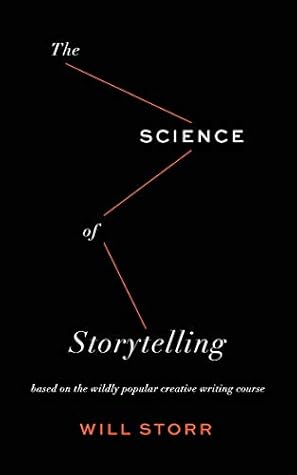More on this book
Community
Kindle Notes & Highlights
by
Will Storr
Read between
February 5 - February 5, 2023
We know how this ends. You’re going to die and so will everyone you love. And then there will be heat death. All the change in the universe will cease, the stars will die, and there’ll be nothing left of anything but infinite, dead, freezing void. Human life, in all its noise and hubris, will be rendered meaningless for eternity. But that’s not how we live our lives. Humans might be in unique possession of the knowledge that our existence is essentially meaningless, but we carry on as if in ignorance of it. We beetle away happily, into our minutes, hours and days, with the fact of the void
...more
Story is what brain does.
Many stories begin with a moment of unexpected change. And that’s how they continue too.
every story you’ll ever hear amounts to ‘something changed’. Change is endlessly fascinating to brains. ‘Almost all perception is based on the detection of change’ says the neuroscientist Professor Sophie Scott. ‘Our perceptual systems basically don’t work unless there are changes to detect.’ In a stable environment, the brain is relatively calm. But when it detects change, that event is immediately registered as a surge of neural activity.
Control is why brains are on constant alert for the unexpected. Unexpected change is a portal through which danger arrives to swipe at our throats. Paradoxically, however, change is also an opportunity. It’s the crack in the universe through which the future arrives. Change is hope. Change is promise. It’s our winding path to a more successful tomorrow. When unexpected change strikes we want to know, what does it mean? Is this change for the good or the bad? Unexpected change makes us curious, and curious is how we should feel in the opening movements of an effective story.
This is what storytellers do. They create moments of unexpected change that seize the attention of their protagonists and, by extension, their readers and viewers.
The place of maximum curiosity – the zone in which storytellers play – is when people think they have some idea but aren’t quite sure.
In his paper ‘The Psychology of Curiosity’, Loewenstein breaks down four ways of involuntarily inducing curiosity in humans: (1) the ‘posing of a question or presentation of a puzzle’; (2) ‘exposure to a sequence of events with an anticipated but unknown resolution’; (3) ‘the violation of expectations that triggers a search for an explanation’; (4) knowledge of ‘possession of information by someone else’.
Unpredictable humans. This is the stuff of story.
Good stories are explorations of the human condition; thrilling voyages into foreign minds. They’re not so much about events that take place on the surface of the drama as they are about the characters that have to battle them. Those characters, when we meet them on page one, are never perfect. What arouses our curiosity about them, and provides them with a dramatic battle to fight, is not their achievements or their winning smile. It’s their flaws.
When designing a character, it’s often useful to think of them in terms of their theory of control. How have they learned to control the world? When unexpected change strikes, what’s their automatic go-to tactic for wrestling with the chaos? What’s their default, flawed response? The answer, as we’ve just seen, comes from that character’s core beliefs about reality, the precious and fiercely defended ideas around which they’ve formed their sense of self.
For the mythologist Joseph Campbell, a story starts with a hero receiving and, at first, refusing a call to adventure. A mentor comes along to encourage them. Somewhere in the middle they’ll undergo a ‘rebirth’, only to rouse dark forces that pursue them. After a near-deadly battle, the hero returns to their community with learnings and ‘boons’.
In his fascinating book on story structure Into the Woods, John Yorke argues for a hidden symmetry in story, in which protagonists and antagonists function as opposites with their rising and falling fortunes mirroring one another. Partly inspired by Gustav Freytag’s nineteenth-century analysis of Ancient Greek and Shakespearean drama, he argues for a ‘universal’ plot design that centres around a midpoint peak. This he describes as a ‘big, epochal, life-changing moment’, occurring ‘exactly’ halfway through ‘any successful story’, in which something ‘profoundly significant’ takes place that
...more
Fresh insights into plot have recently become available thanks to the arrival of ‘big data’. One compelling analysis of story structure was carried out by publishing executive Jodie Archer and Matthew Jockers of Stanford University’s Literary Lab, whose algorithm was set to work on 20,000 novels and taught itself to predict a New York Times bestseller with an accuracy of 80 per cent. Fascinatingly, the resulting data supported the life’s work of Christopher Booker, whose seven basic plots did, indeed, emerge. What also emerged was an indication of what people are most curious to read about.
...more
The gift of story is wisdom.
The lesson of story is that we have no idea how wrong we are.
The consolation of story is truth.
A few years ago, I was lucky enough to interview the famous psychologist Professor Jonathan Haidt. He told me something I’ve never forgotten: ‘Follow the sacredness. Find out what people believe to be sacred, and when you look around there you will find rampant irrationality.’ Rampant irrationality! This is exactly what we should be hunting in our characters.


